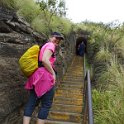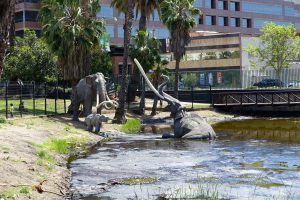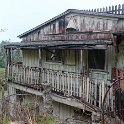
Here’s some pics and video from our longest run yet with the cats in the Traveling Cat Adventure Vehicle – five days on the Sonoma coast from Bodega Bay to Fort Ross, coming back home on New Year’s Day.
After another rough start with the cats (they still aren’t too keen on being trapped in the big, noisy moving house) and after cleaning up a messy episode with Pan, they eventually settled down for the journey. We spent a couple of nights at the Bodega Dunes campground exploring the area on foot and finding a few geocaches by day. On the following day we only ventured up the coast a few more miles and overnighted in an overflow area at Wright’s Beach. We then continued on to visit Goat Rock to watch the crazy surf, check out the harbor seals at the mouth of the Russian River and hike out to the mammoth rubbing rocks. We got to Fort Ross just before closing on New Year’s Eve and slipped in the exit gate to run around and check it out before they kicked us out. On New Year’s Day, we started making our way back, watching for whales far off-shore as we made leisurely progress heading home via the Russian River valley.
The cats seemed to be doing well with slow speed travel and frequent stops and they definitely enjoyed a nice, extended lunch stop off-leash on some empty, grassy school grounds in Santa Rosa. After five days in the traveling cat adventure vehicle, it was really going well and seeming like this was ready to work for extended trips. Unfortunately, we had a bit of mishap just before getting home. One of the solar panels came loose and started smacking around on the roof before we realized what was happening. It broke free before I could get off the freeway and we ended up pulling over to assess the damage. Before I knew it, Darlene was off running across the freeway to retrieve the lost panel and then we attracted a highway patrolmen who came over to scold us (and see if we needed assistance). The noise and drama was all quite traumatic for Pan and a lousy ending to an otherwise promising start to future extended traveling cat adventures. (And of course now I need to redo the solar panel installation.)
Click through for the full gallery:


































